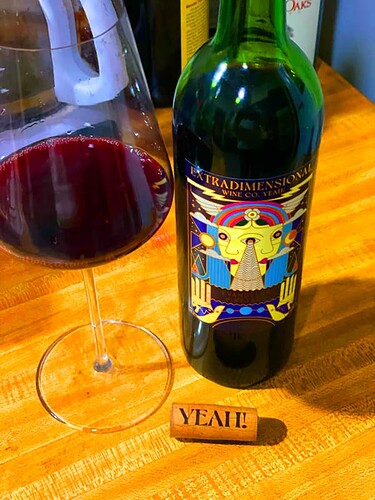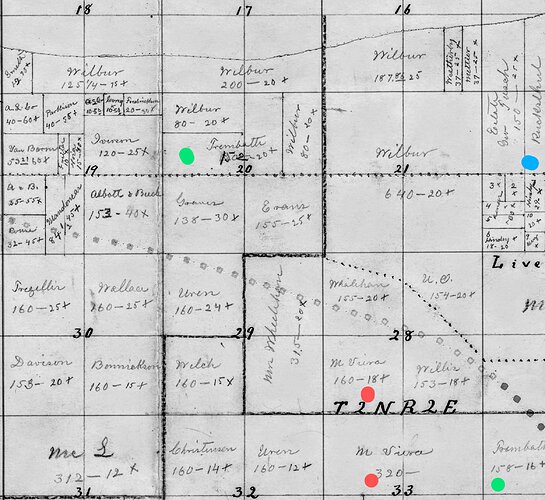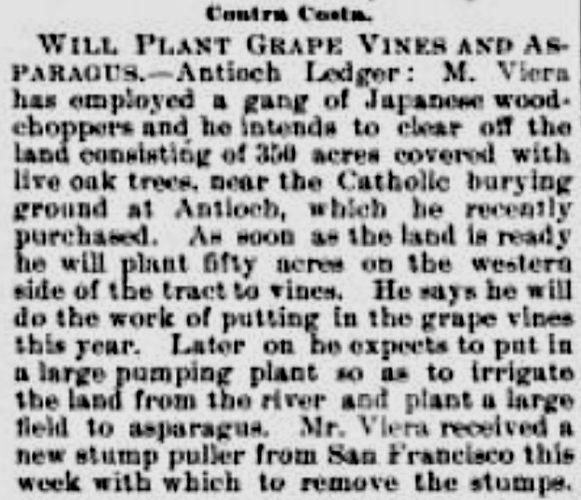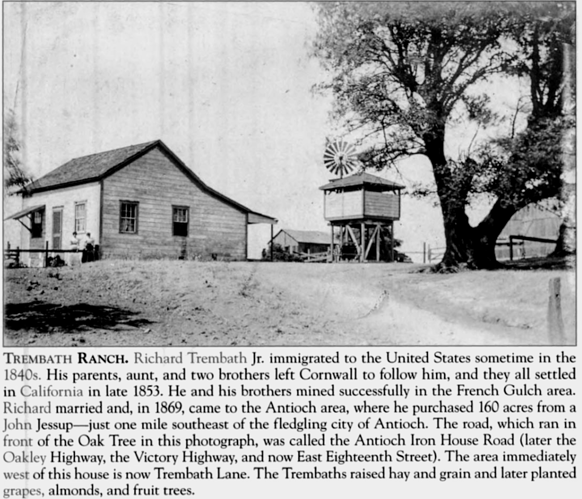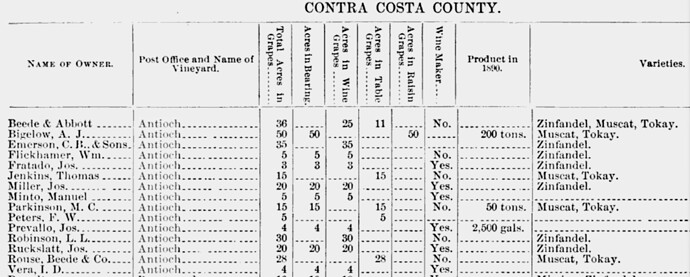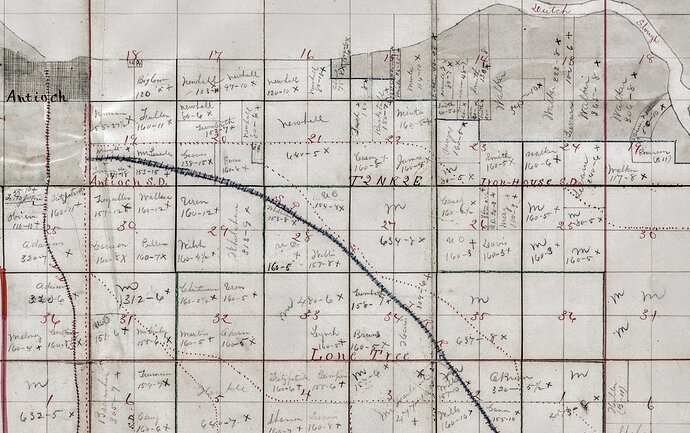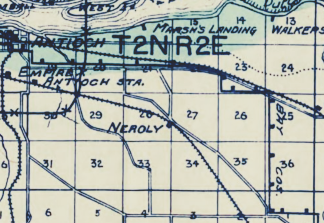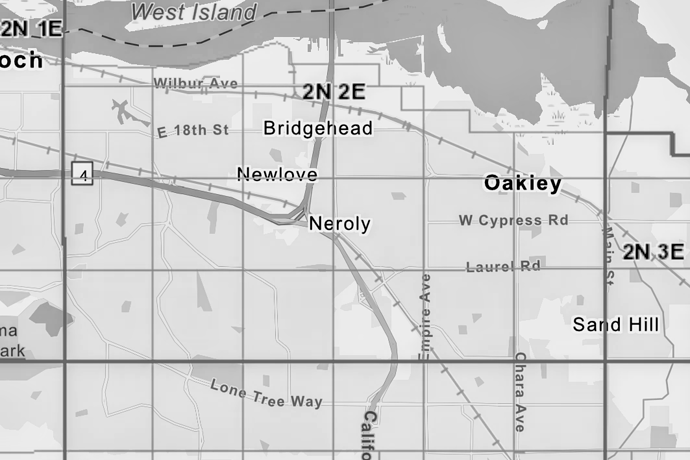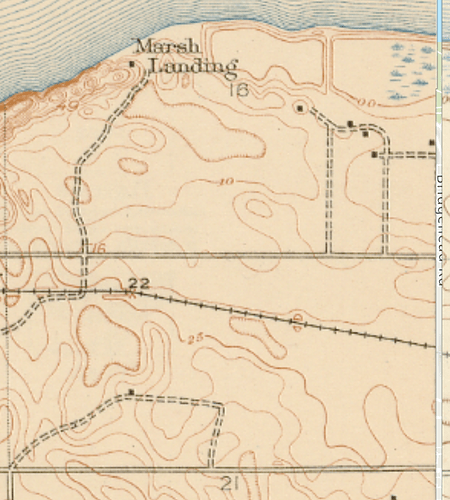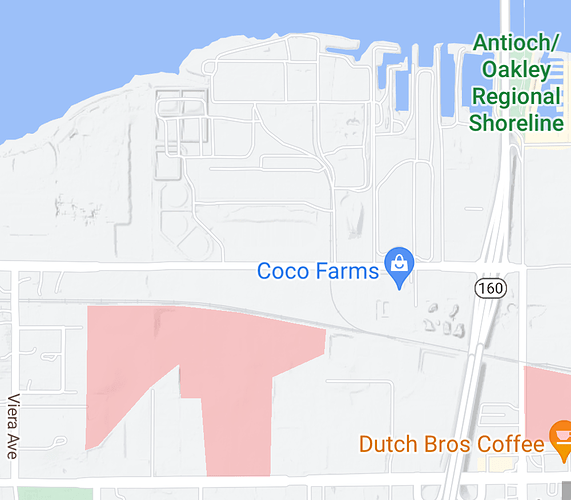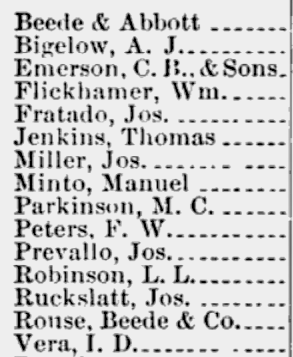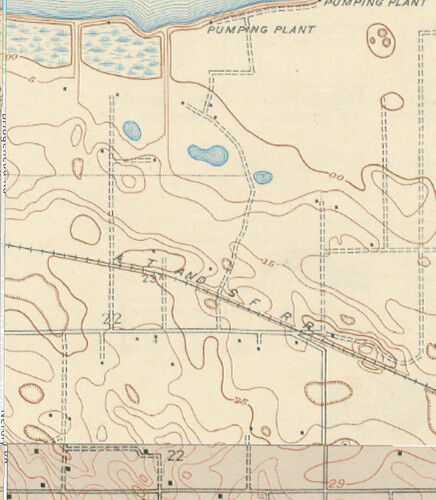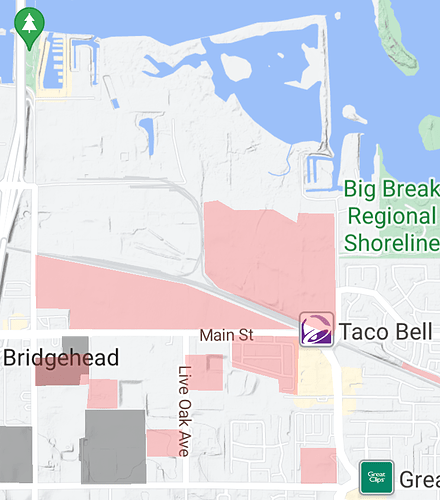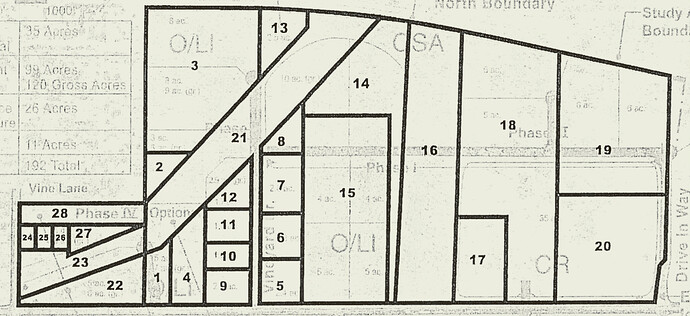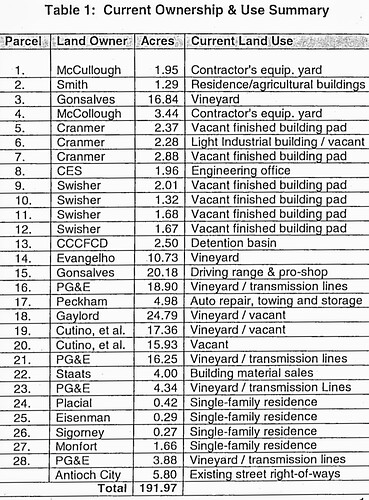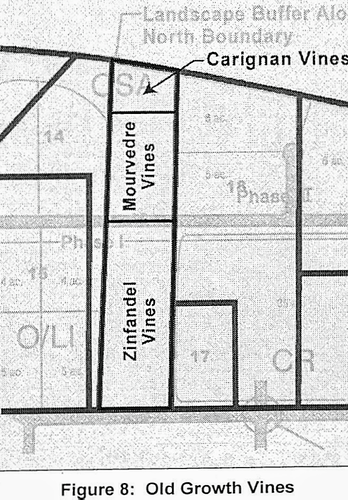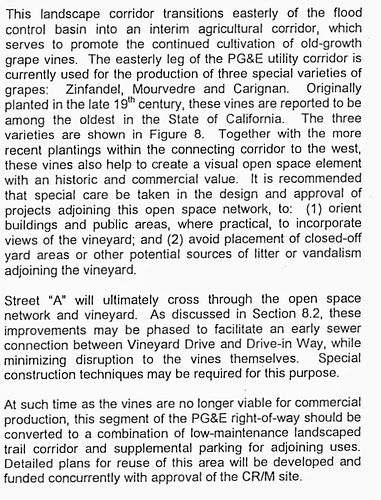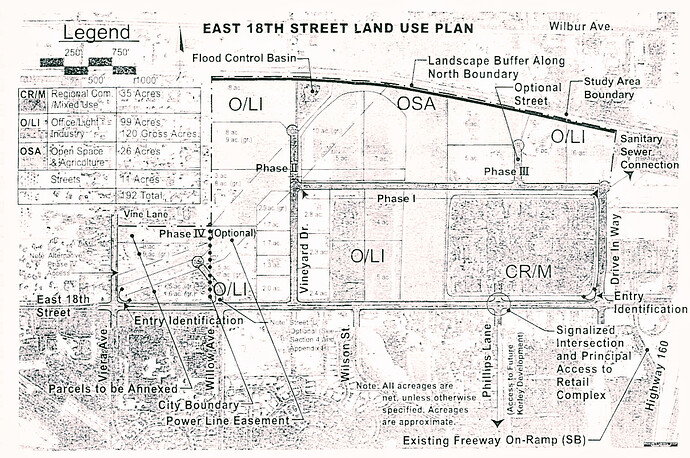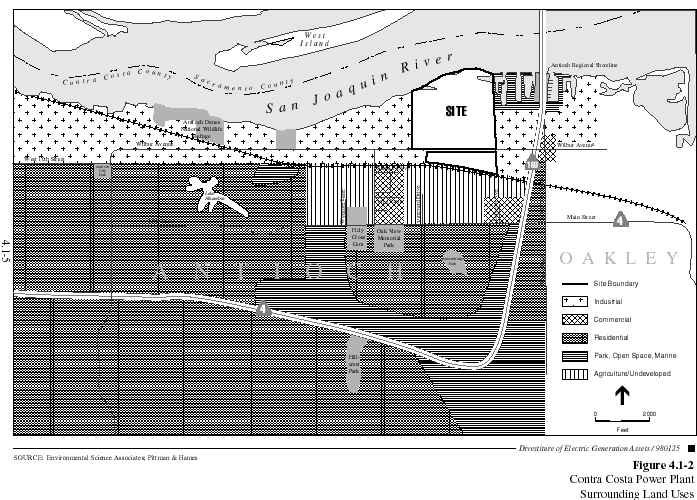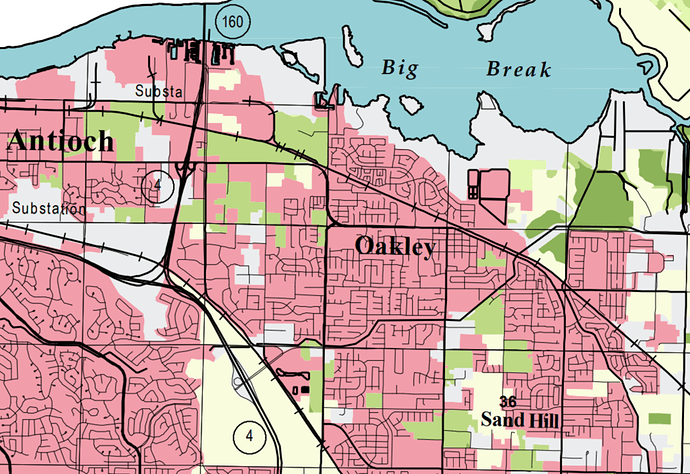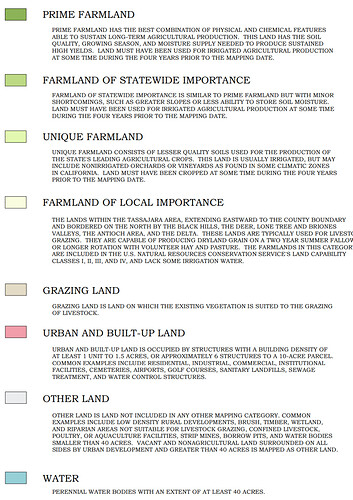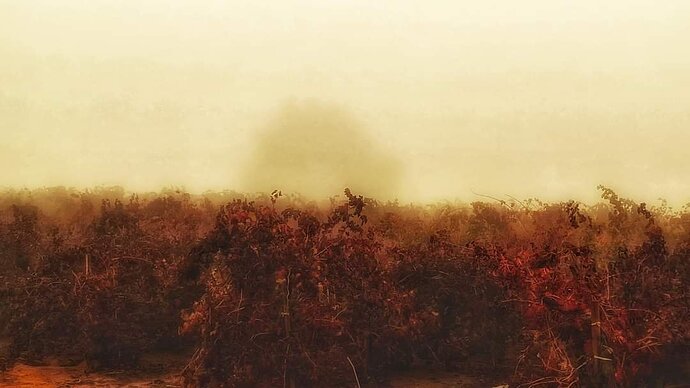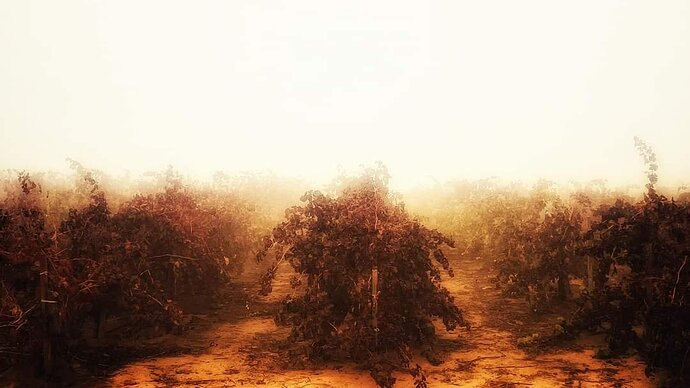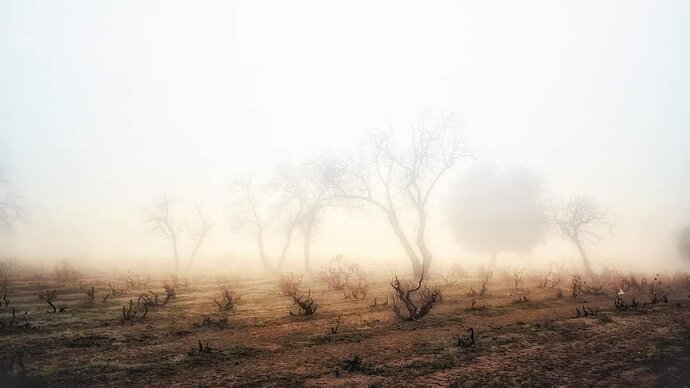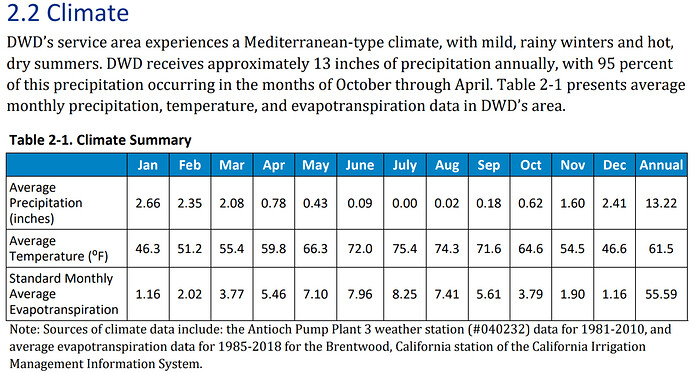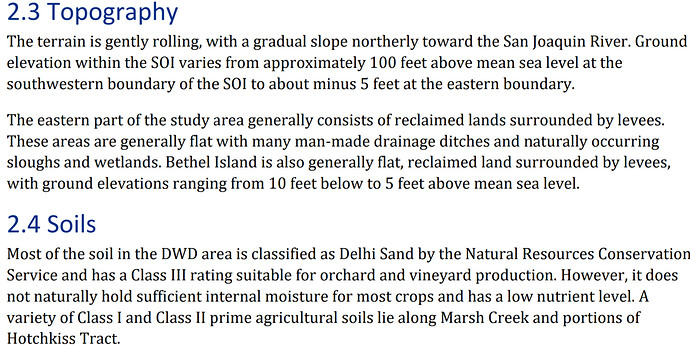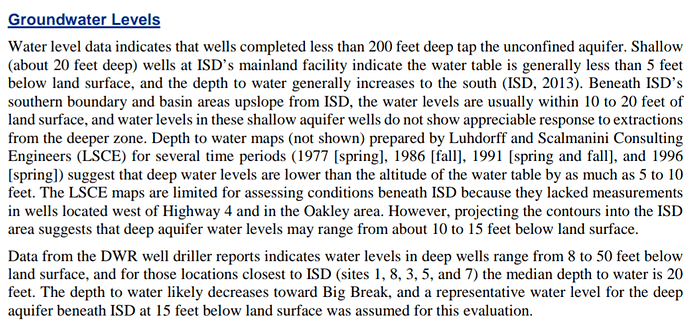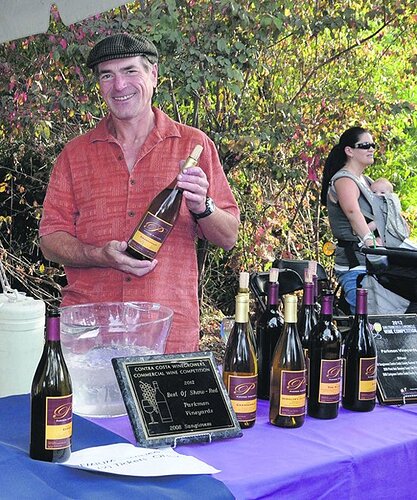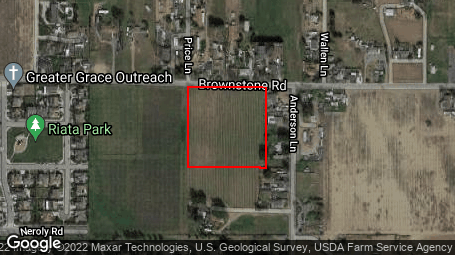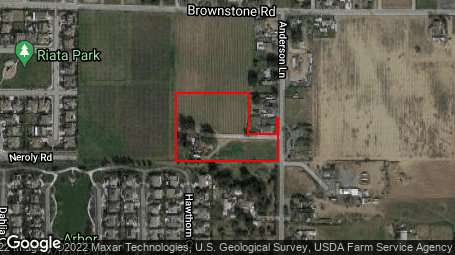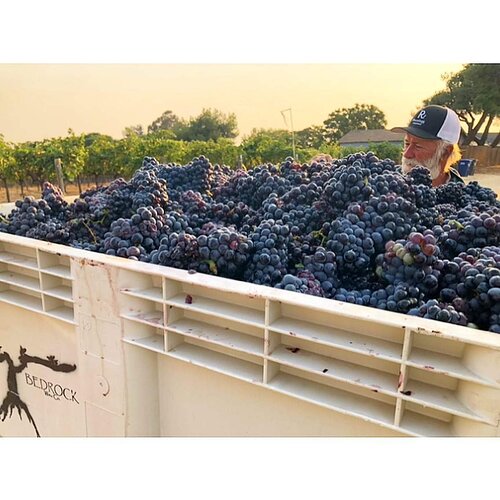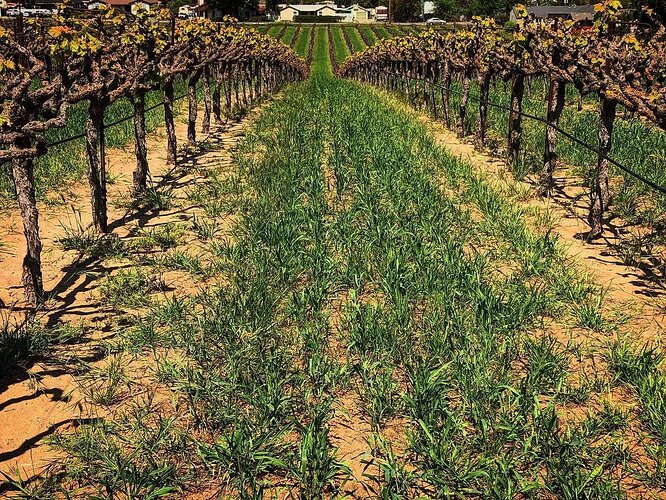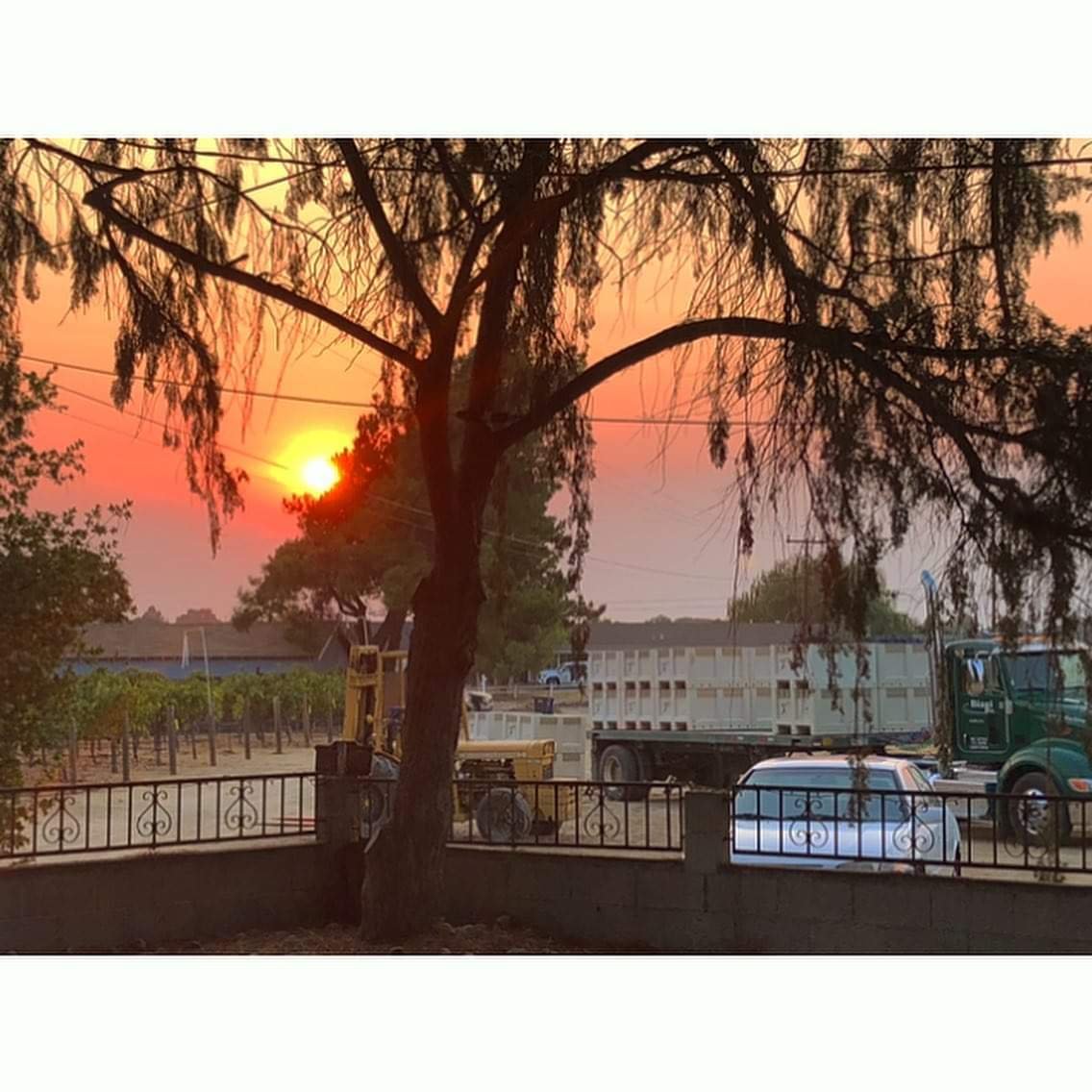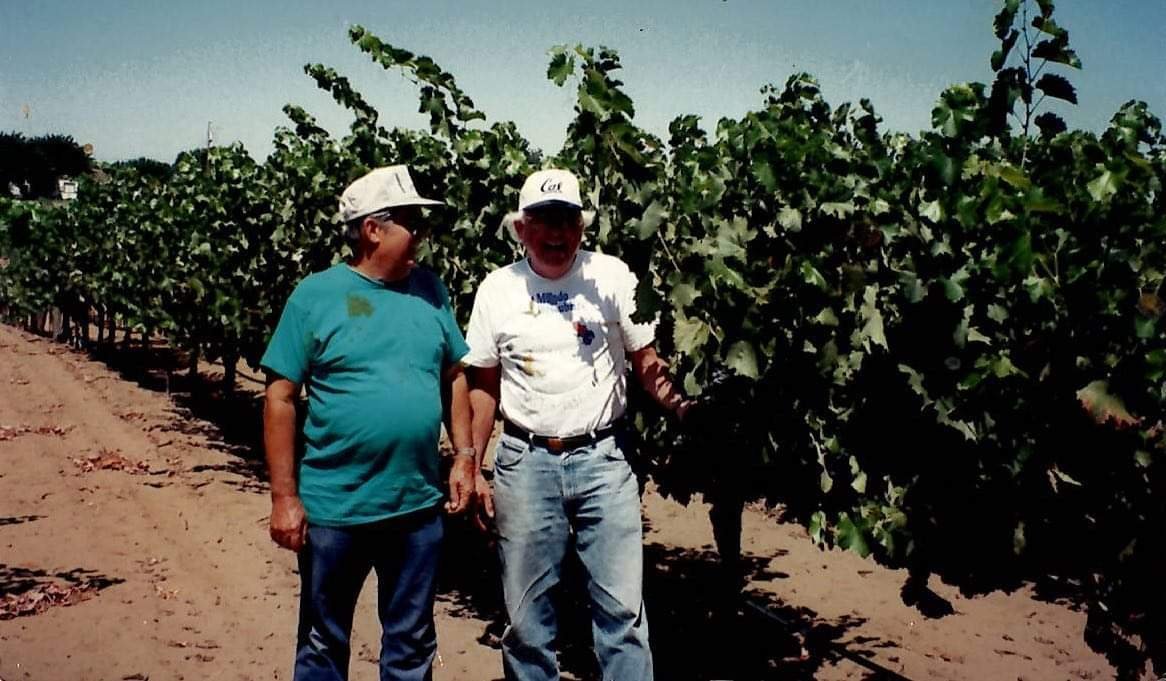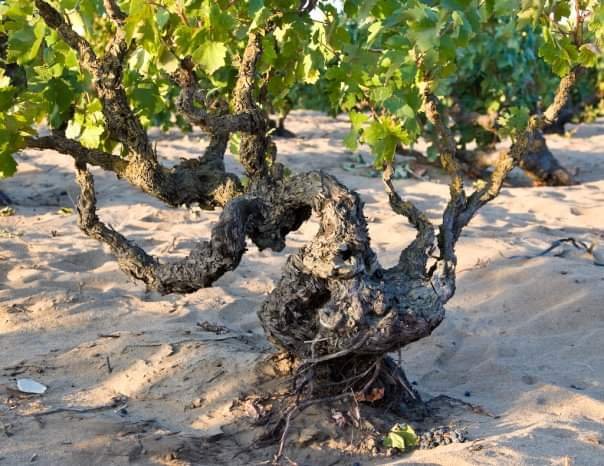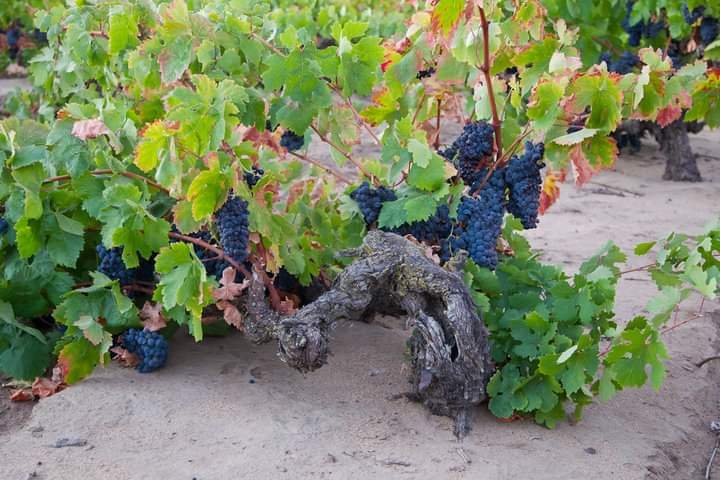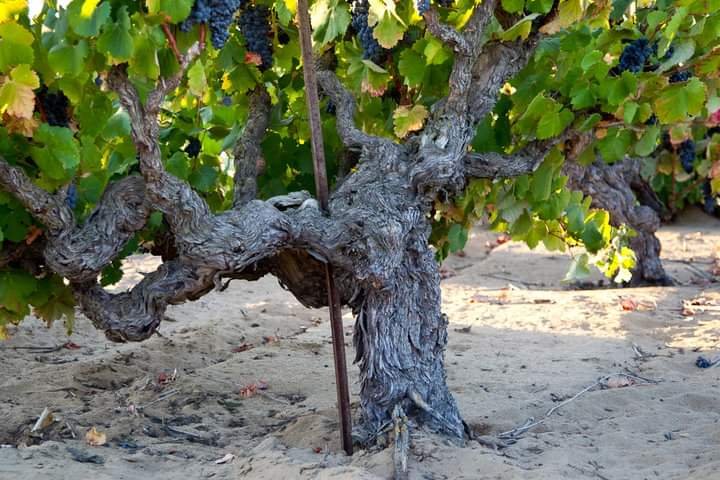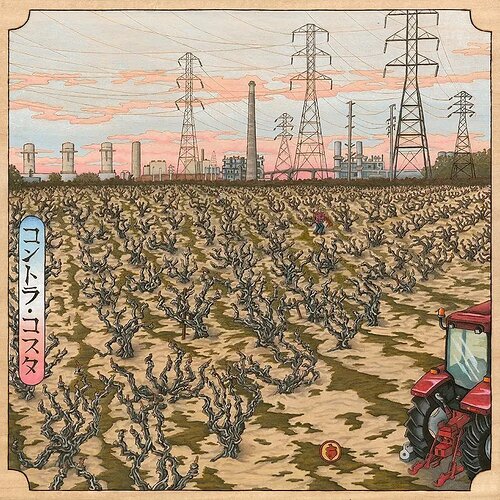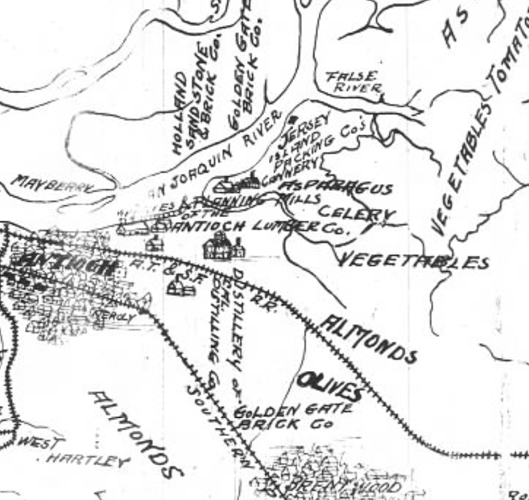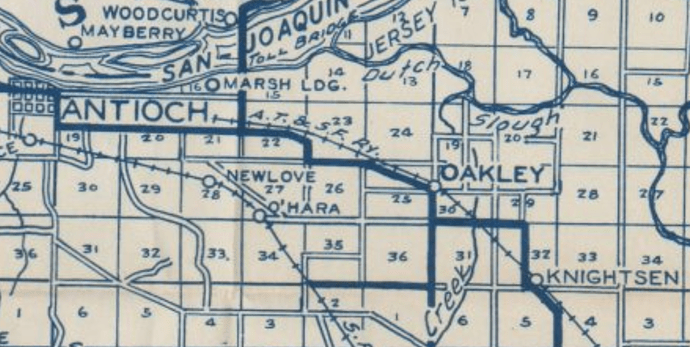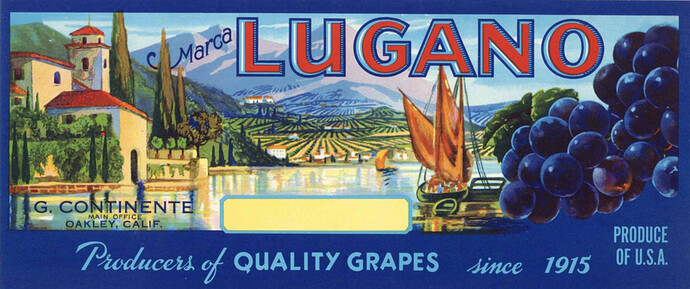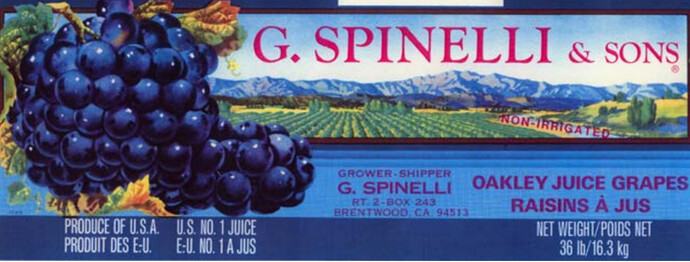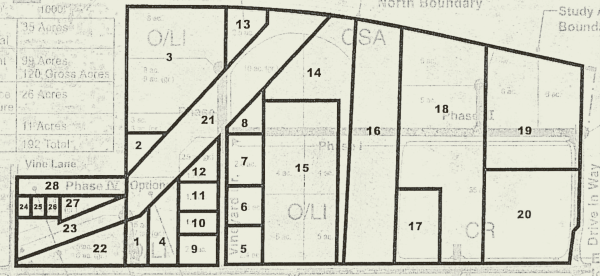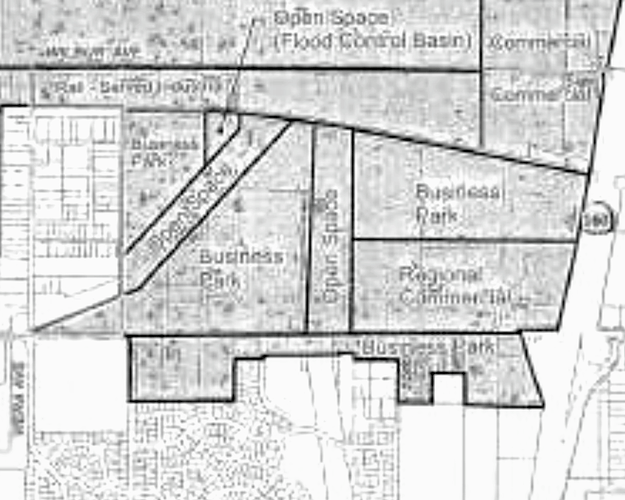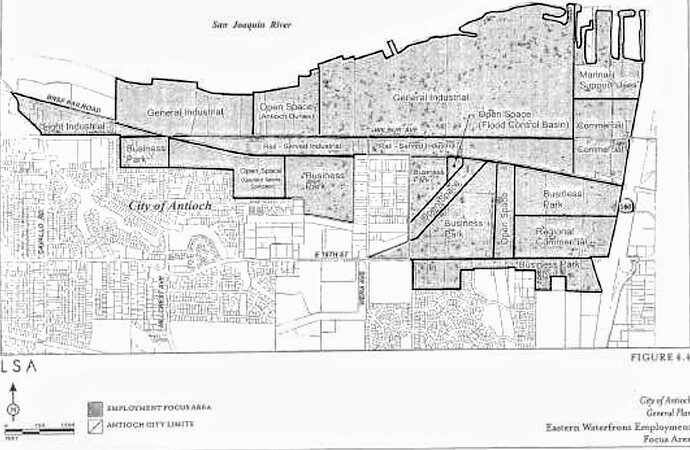David Parker’s Parkmon Vineyards was a small Moraga winery that produced several single-vineyard bottlings from across Contra Costa County.
No vintages have been released recently. Still, the entity remains listed on California’s business registry, and the winery website has been retained.
Starting in 2004, Parkmon produced wines from the “Evangelho Vineyard”, eventually building up to a line-up of Zinfandel, Carignane, Mourvèdre, and a late-harvest Zin.
Wines from “Evangelho Vineyard”:
2010 Vintage:
-
2010 “Ancient Vines” Mourvedre “Evangelho Vineyard”
"2010 marks the sixth and final year we were able to procure grapes from the sweetest area of Frank Evangelho’s gnarled ancient vines in Oakley. This year, the fruit came in riper and richer than ever, bursting with sweet jammy flavors, good acidity and vibrant aromas. The resulting wine is decadent and fruit-forward offering a powerful mouthful of flavors to complement the best backyard barbecue or grilled spicy meats. For our devoted Mourvedre fans, we’re confident you’ll approve of this new vintage.
“In the glass, the wine shows a deep, dark magenta color, with glass-staining intensity. The nose is big and brooding with rich scents of black plum, blueberry, and rum raisin that exude from the glass, accentuated by floral notes of violets and a good dose of spice – predominantly black pepper and clove. In the background, Mourvedre’s distinctive, classic aromas of game and bacon fat indicate this wine is more than just a jammy fruit bomb. On the palate, you’re greeted with a mouthful of opulent, concentrated ripe black fruits, giving the impression of power but with gentle tannins, suggesting this wine should pair well with an array of spicy and flavorful foods…”.
2009 Vintage:
-
2009 “Ancient Vines” Carignane, “Evangelho Vineyard”
"…We have been bottling the ‘Evangelho’ Carignane since 2006 and are continually delighted with the results. Growing in the sand and dry farmed out in Oakley (Eastern Contra Costa County), these gnarly old vines generally produce fruit with outstanding natural acidity and a unique spicy character, though sometimes with higher-than-ideal sugar levels. In 2009, fortune shined on us as the fruit from Frank Evangelho’s 120±year-old vineyard came in at near perfect balance between sugar, acid, and flavor ripeness, resulting in what I hope you’ll find is the best Carignane we’ve produced to date. Unfortunately, other renowned and larger wineries have now also discovered this hidden gem and have contracted to purchase all their fruit (see Neyers Vineyard’s blockbuster Wine Spectator review for their 2010 Carignane). Alas, this will be our last vintage of Carignane from the ‘Evangelho Vineyard’, but stay tuned – we discovered another great old-vine vineyard in 2010, just around the corner.
“As always, the color of this wine is a gorgeous, dark nearly maroon color with a hint of lavender at the rim of the glass. This year’s version displays particularly intense floral aromas leaping from the glass and filling the senses with associations of Marionberry or Olallaberry pie. This is definitely a big wine, but on the palate, bright acidity helps balance the huge expansion of flavors, including ripe, concentrated Santa Rosa Plum and black cherry with a touch of spice. The alcohol level, while relatively high (14.9%), is kept in check by the substantial fruit and does not leave an impression of heat or heavy viscosity, but instead, a juicy, richly enjoyable lingering finish. The tannic structure, while clearly evident, is not overwhelming, allowing this wine to be enjoyable now (with proper aeration) as well as over the next 12-15 years with proper storage…”.
-
2009 Mourvedre, “Evangelho Vineyard”
“2009 marks the fifth straight year we were fortunate enough to procure grapes from the sweetest area of Frank Evangelho’s gnarled ancient vines in Oakley. This year, the fruit again came in characteristically ripe and rich, bursting with sweet jammy flavors and steely acidity that were in such great balance, no adjustments were necessary prior to fermentation. We did however, bleed off about 12% of the juice from the skins and seeds within a few hours of crushing to use for our 2009 Shari’s Rosé. The effect on the remaining must was incredible extraction of color and concentration of flavors. The resulting finished wine is pure hedonistic decadence. A powerful, intense wine, yet balanced and not overly viscous. For our devoted Mourvedre fans, we’re confident you’ll be ecstatic with this new vintage…”.
2008 Vintage:
-
2008 “Ancient Vines” Carignane, “Evangelho Vineyard”
"Given diminished yields in 2008, we weren’t sure we would be able to get Carignane fruit from Frank Evangelho’s 120-year-old vineyard growing in the sand and dry farmed out in Oakley (Eastern Contra Costa County), but thankfully, good luck shined on us…We have been bottling the ‘Evangelho’ Carignane since 2006 and are continually delighted with the results.
“This year’s version displays particularly intense floral aromas of candied cherry, sweet tobacco, and rhubarb pie. This is definitely a big wine, but on the palate, bright acidity helps balance the huge expansion of flavors, including ripe, concentrated Santa Rosa Plum and red licorice. The alcohol level, while relatively high (14.7%), is kept in check by the substantial fruit and does not leave an impression of heat or heavy viscosity, but instead, a smooth, richly enjoyable finish. The tannic structure, while clearly evident, is not overwhelming, allowing this wine to be enjoyable now (with proper aeration) as well as over the next 12-15 years with proper storage. We envision this wine w/ a grilled hangar steak or ribs with a black peppercorn and raspberry marinade, or enjoy it today with a sharp, relatively pungent cheese.”
-
2008 “Ancient Vines” Mourvedre “Evangelho Vineyard”
"In 2008, for the fourth straight year, we were fortunate enough to be able to procure grapes from the sweetest area of Frank Evangelho’s gnarled ancient vines in Oakley. This year, the fruit again came in characteristically ripe and rich. While our 2007 version was blended with 40% fruit from our estate vineyard, the 2008 contains all old-vine ‘Evangelho’ fruit and is pure decadence.
“In the glass, this wine has a deep, glass-staining red-violet hue. The nose is rich with brambly berry pie and sweet, creamy aromas of plum, allspice and a hint of game, earth and anise, typical of the Mourvedre varietal. The distinctive ‘Evangelho’ characteristics of pencil lead and black pepper scents are present, but relatively veiled in the background compared to the deep dark concentrated fruit. On the palate, you’re greeted with immense, mouth-coating flavors of ripe strawberry, plum and black raspberry. This wine might be viewed as an antithesis to our Petit Verdot – if you like bigger, jammier, fruitier wines, you’ll love this one. Though its weight is substantial, the wine’s bracing acidity – normal for Mourvedre – helps balance the high-octane alcohol level and resulting sensation of sweetness, preventing it from feeling overbearingly viscous. The power and muscularity of the wine extends into the long-lasting finish, with a tannic structure that suggests this wine should be enjoyed with food…”.
-
2008 “Late Harvest” Zinfandel, “Ancient Vines”
"This wine has been a long time in the making. Our last release of ‘Ancient Vine’ Zinfandel, our 2007 was over two years ago so we’ve been looking forward to making this wine available. In the glass, it exhibits a beautiful ruby red color with long legs, suggestive of a big, full-bodied, full-throttle wine. The nose exudes fragrant aromas of jammy raspberries, dried plums and cherry liqueur, with complementing scents of dried herbs, black pepper, leather, and the typical ‘Evangelho’ pencil shavings.
“On the palate, the fruit envelops the senses, filling the mouth with concentrated flavors of red fruits, berries and spice, but with enough acidity to balance the viscosity and weight. On the back palate, the wine reveals its high octane-level, but rather than leaving a drying or ‘hot’ sensation, it expands into a lingering finish with hints of toasty vanilla cream and berry pie…”.
2007 Vintage:
-
2007 “Ancient Vine” Zinfandel, “Evangelho Vineyard”
"Once again, we are grateful to be able to offer this old vine Zin from Frank Evangelho’s vineyard in Oakley, possessing some of the oldest vines in North America (over 120 years old). This wine presents a bright magenta color in the glass. The nose is classic Evangelho Zin: jammy berries, Santa Rosa Plum, and pomegranate, with a slight hint of dust, graphite and black pepper.
“The 5% each of Carignane and Petite Sirah blended into this wine are evident in the character, but well-integrated. Upon entering the palate, you’ll notice the zing of natural acidity, which keeps the wine lively and refreshing on the palate and helps it pair well with rich and/or spicy grilled foods. The flavors fill the mouth with berries, red cherries, plum, and a dash of rhubarb leading to a pleasant, modestly spicy finish.”
Parkmon’s “Ancient Vines” wines were drawn from the Gonsalves family’s “Sandy Lane Vineyard” in 2010, when fruit from the “Evangelho Vyd” became unavailable.
Wines from the “Gonsalves Vineyard”:
2010 “Ancient Vines” Carignane (described on website as “Evangelho Vyd”; probably exclusively “Gonsalves” fruit, or blend of both sites)
"…2010 represents the first year we sourced fruit from Dan Gonsalves, a neighbor of Frank Evangelho, from whom we acquired our Carignane grapes previously. Growing in the sand (literally on Sandy Lane), and dry farmed in Oakley, these gnarly old vines produce fruit with outstanding natural acidity and a unique spicy character. In 2010, a challenging vintage for many cooler winegrowing regions, the climate was near perfect in the warm, Delta region of Eastern Contra Costa. The fruit was harvested with impeccable balance between sugar, acid, and flavor ripeness, resulting in what I hope you’ll find is the best Carignane we’ve produced to date.
“As always, the color of this wine is a gorgeous dark, nearly maroon color with a hint of lavender at the rim of the glass. This year’s version displays particularly intense floral aromas leaping from the glass and filling the senses with associations of ripe red fruits, candied cherry, rhubarb, and blueberry cheesecake. This is definitely a big wine, but on the palate, bright acidity helps balance the huge expansion of ripe, concentrated flavors, redolent of berry jam with a touch of spice. The alcohol level, while relatively high (14.9%), is kept in check by the ample fruit, avoiding the sensation of heat or heavy viscosity, and instead the result is a full-bodied, rich, enjoyable wine with good structure, complemented by discernable, but not overwhelming tannins that coalesce in a lavish, lingering, vanilla-tinged finish…”.2010 Petite Sirah “Gonsalves Vineyard”
"In 2010, we were looking for a new source of Carignane and we were fortunate enough to find Dan Gonsalves’ old vine vineyard on Sandy Lane in Oakley. Little did we know then that he also had a small corner of his property devoted to 80+ year-old Petite Sirah vines, from which he offered us a half ton to experiment with. We were blown away by the intensity and expressiveness of the fruit and immediately made plans to make a standalone wine from the grapes – the first Petite Sirah we’ve released since our 2008 Lamorinda Petite that we released five years ago!
"The wine was aged for 21 months in a new American Oak barrel and then aged another two years in bottle before this release, which has tamed some of the massively bold tannins, yielding a wine that is now amazingly well-balanced for such a huge, robust profile. If you are a fan of Petite Sirah (and this varietal has its ardent followers!), we hope you’ll find this is one of the most impressive incarnations you’ve experienced; if you are not as familiar with this grape, but enjoy big, bold red wines, I think you’ll find this Petite remarkably stunning.
"The experience starts with the appearance in the glass. Most Petite Sirahs are dark and oft-described as inky, but this wine takes it to another level: the color goes beyond indigo and violet, reminiscent of the color of eggplant. At first glance, it looks completely opaque, but by holding the glass up to the light, one can see a striking brilliance, with a ring of lavender at the rim of the glass. One of this wine’s notable characteristics is the long, spindly legs – due to the substantial viscosity and relatively high alcohol content of the wine – that start high up on the glass and ooze their way mesmerizingly along the side back to the pool of nectar from where they originated.
"The nose starts off with powerful fragrances of dark fruits – blackberries, black plums, blueberries, and cassis – enticing and engulfing the senses, but this is no simple, single-faceted fruit bomb! A deeper, longer sniff reveals the wine’s complexity: earthy notes of black tea, forest floor, sweet tobacco, and a hint of pencil lead frame and accentuate the fruit core, with floral scents of violet, bay leaves, anise, and the varietal’s signature black pepper rounding out the complex, beguiling aromatics.
“Most well-respected Petite Sirahs are described as ‘muscular’ and ‘masculine’, a result of the varietal’s substantial coarse, tannic structure, but this wine exhibits surprising refinement and sophistication. With your first sip, the wine’s enormity is undeniable as the rich, bold nectar coats the palate with pleasing weight and viscosity, but with enough acidity to avoid a cloying sensation. The big black fruit flavors expand from the entry, swathing the mid-palate with round, velvety tannins (distinguishing it from typical Petites), offering a persistent grip without the varietal’s typical chalky granularity, leading to an enduring, warm finish, with a residual essence of dark cocoa…”.2011 “Ancient Vines” Mourvedre, “Gonsalves Vineyard”
Wines from “Parkmon Estate Vineyard” in Lamorinda AVA :
Wines from other Contra Costa County vineyards:
Cabernet Sauvignon
- “Doherty Vineyard”, “Ettell Vineyard”, “Koelmel Vineyard” in Lafayette
Petite Sirah - “Captain Vineyard” in Lamorinda
Pinot Noir - “Captain Vineyard”, “Haas Vineyard”, “Magalhaes Vineyard”, “Nazeri Vineyard” in Lamorinda
Primitivo - “Braswell Vineyard” in Walnut Creek
Right Bank Blend - “Captain Vineyard” in Moraga
Robusto e Buongusto (Cab Sauv/Sangio) - “Koelmel Vineyard”***** in Lamorinda
Rosato di Sangiovese - “Koelmel Vineyard”***** in Lamorinda
Sangiovese
- “Koelmel Vineyard”***** in Lamorinda
Sauvignon Blanc - “Sutton Vineyard” in Morinda and “Thal Vineyard” in Lafayette
Syrah - “Magalhaes Vineyard” and “Nazeri Vineyard” in Moraga
***** “Koelmel Vineyard”: According to the winery webpage, Mark and Kris Koelmel’s Sangiovese vines (planted c.1994) "…were planted to the same clone that has been isolated in the Montalcino area of Tuscany that contribute 100% of the fruit for the famed and highly sought-after Brunello di Montalcino."Most Parkmon wines were produced in batches of 20-30 cases. Though limited in availability, several vintages were tasted by critics and discussed in local publications.
East Bay Times
“A Burgeoning Climate for Viticulture: Moraga’s Parkmon, One of Lamorinda’s Thriving Wineries”
by Lou Fancher
June 20, 2013
Parkmon Vineyards website:
http://www.parkmon.com/
Search: “Evangelho”:
http://www.parkmon.com/component/search/?searchword=Evangelho&searchphrase=all&Itemid=101
Search “Gonsalves”:
http://www.parkmon.com/component/search/?searchword=Gonsalves&ordering=newest&searchphrase=all&limit=50
